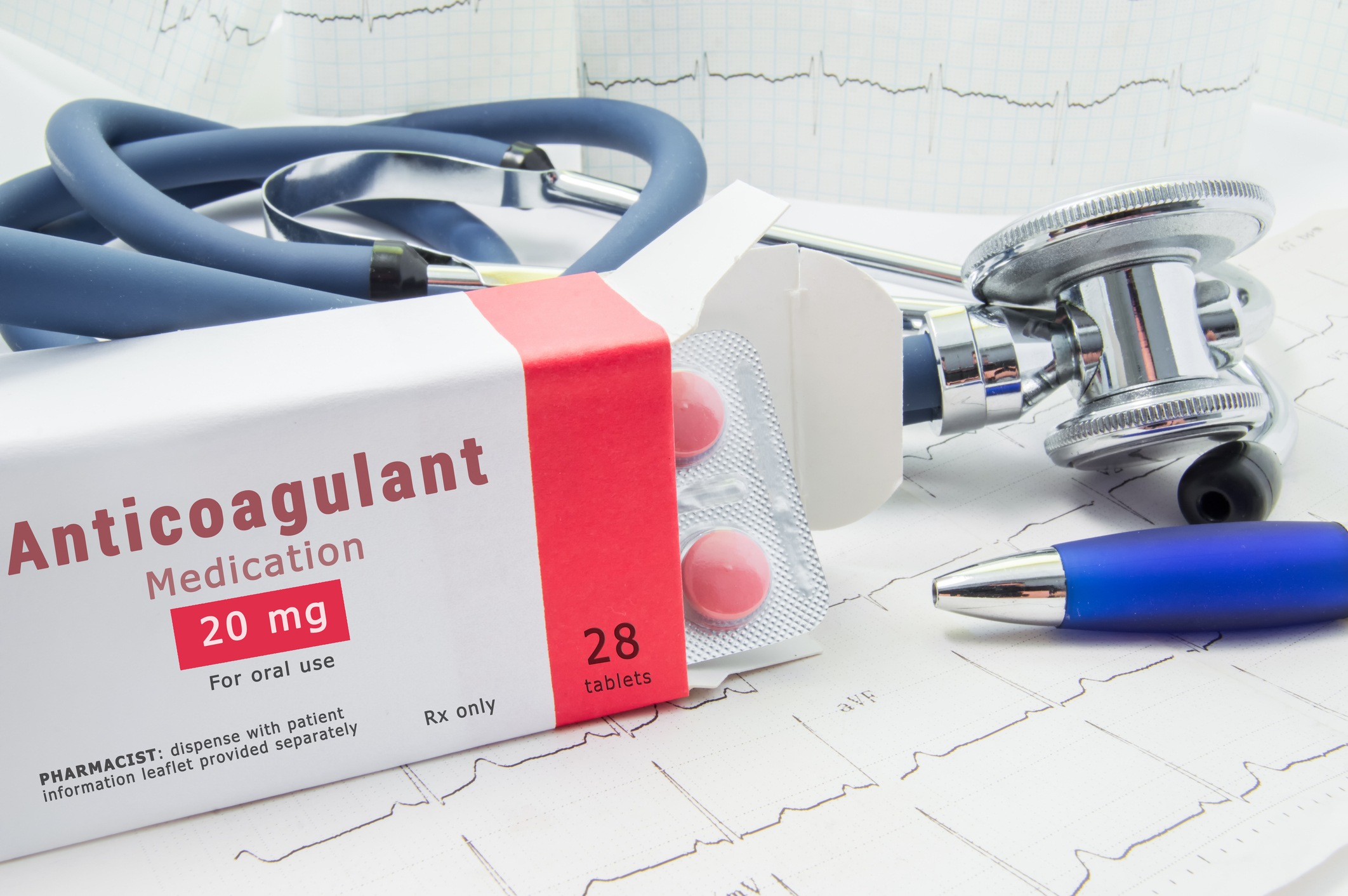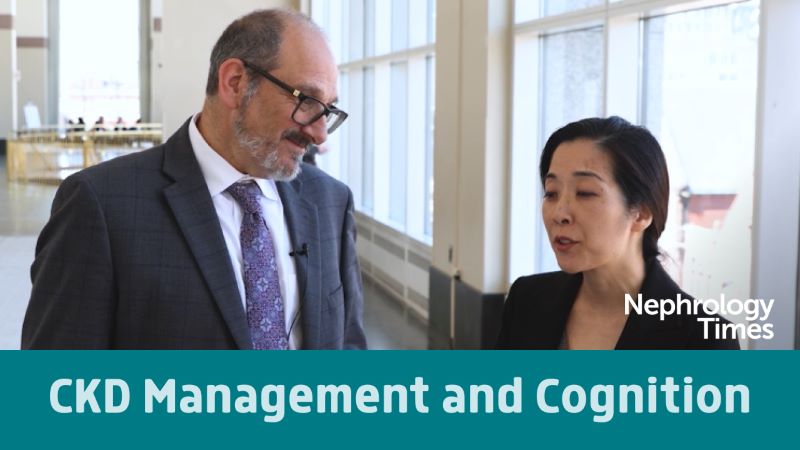
The third most common factor associated with cardiovascular death is venous thromboembolism (VTE), including deep vein thrombosis (DVT) and pulmonary embolism (PE). Patients with chronic kidney disease (CKD) are at increased risk of developing VTE compared with those without CKD. Further, decreased kidney function following PE is both a short-term and long-term independent risk factor associated with mortality rates. Increasing age is associated with increased risk for CKD and VTE as well as the prevalence of other risk factors such as type 2 diabetes and hypertension. In addition, due to the clearance of direct oral anticoagulant (DOAC) medications by the kidneys, therapy choices may be more limited in patients with CKD.
There are limited data available on the efficacy and safety of DOAC therapy for the treatment of patients with advanced CKD; patients with severe kidney impairment (creatinine clearance level <25-30 mL/min) have been excluded from phase 3 randomized trials of DOAC therapy in patients with VTE. Some DOAC medications are approved for the treatment of VTE in patients with moderate to severe CKD and are licensed for use in patients with creatinine clearance levels as low as 15 mL/min.
The GARFIELD-VTE (Global Anticoagulant Registry in the Field-Venous Thromboembolism) study is an ongoing worldwide prospective noninterventional registry designed to observe initial and extended therapeutic strategies and clinical outcomes among patients with VTE who are being treated according to local standard practices. Shinya Goto, MD, PhD, and other GARFIELD-VTE investigators conducted an analysis comparing baseline characteristics, treatment patterns, and 12-month outcomes between patients with CKD stages 3-5 and those with CKD stages 1-2 enrolled in the study. Results of the analysis were reported in JAMA Network Open [doi:10.1001/jamanetworkopen.2020.22886].
The primary outcomes of interest were all-cause mortality, recurrent VTE, and major bleeding. All-cause mortality was considered a competing risk for other clinical outcomes in the estimation of cumulative incidences.
A total of 10,684 patients in the GARFIELD-VTE trial had objectively confirmed VTE; of those, 8979 (84.0%) had available data on serum creatinine. Of the 8979, 49.4% (n=4432) were female and 65.8% (n=5912) were White. Overall, 6924 eligible patients (77.1%) were classified as having mild to no CKD (2991 patients with CKD stage 1 and 3933 patients with CKD stage 2) and 2055 patients (22.9%) were classified as having moderate to severe CKD (1650 patients with CKD stage 3, 190 patients with stage 4 CKD, and 215 patients with stage 5 CKD). CKD stages were calculated using the Modification of Diet in Renal Disease equation.
Patients with moderate to severe CKD compared with those with mild to no CKD were more likely to be female (1173 [57.1%] vs 3259 [47.1%] and ≥65 years of age (1278 patients [62.2%] vs 2313 patients [33.4%]). The Spearman correlation coefficient for estimated glomerular filtration rate (eGFR) and creatinine clearance was 0.75.
The distribution of VTE events at baseline was comparable between the two groups. In the moderate to severe CKD group, 57.0% (n=1171) presented with DVT alone, 26.6% (n=547) presented with PE alone, and 16.4% (n=337) presented with both DVT and PE. In the mild to no CKD group, 58.9% (n=4079) presented with DVT alone, 24.9% (n=1723) presented with PE alone, and 16.2% (n=1122) presented with both DVT and PE.
At baseline, the receipt of parenteral therapy alone was comparable between the two groups: 17.3% (n=355) patients in the moderate to severe CKD group versus 18.1% (n=1253) patients in the mild to no CKD group. Patients in the moderate to severe CKD group were less likely to be receiving DOAC therapy, either alone (27.1% [n=557] vs 30.9% [n=2139]) or in combination with parenteral therapy (15.5% [n=319] vs 17.9% [n=1239]).
At 12 months, the unadjusted rate of all-cause mortality in patients with moderate to severe CKD was higher than that of patients with mild to no CKD: 12.8 deaths per 100 person-years (95% confidence interval [CI], 11.3-14.6 deaths per 100 person-years) versus 6.7 deaths per 100 person-years (95% CI, 6.1-7.3 deaths per 100 person-years). Patients in the moderate to severe CKD group were more likely than those in the mild to no CKD group to die of cardiac-associated conditions but less likely to die of cancer and VTE-associated conditions. In the group with moderate to severe CKD, the rate of recurrent VTE was higher than in the group with mild to no CKD. There was a greater proportion of PE recurrences (with or without VTE) in patients with moderate to severe CKD than in patients with mild to no CKD.
Major bleeding was also more common in the moderate to severe CKD group compared with the mild to no CKD group. The most frequent sites of bleeding in both groups were the upper gastrointestinal tract and the lower gastrointestinal tract.
Following adjustment for potential confounders, the incidence of all-cause mortality remained higher in patients with moderate to severe CKD than in those with mild to no CKD: adjusted hazard ratio (aHR), 1.44; 95% CI, 1.21-1.73. At 12 months, the incidence of recurrent VTE (aHR, 1.40; 95% CI, 1.10-1.77) and major bleeding (aHR, 1.40; 95% CI, 1.03-1.90) was also higher in patients with moderate to severe CKD than in patients with mild to no CKD. There was no difference between the two groups in incidence of cancer (aHR, 1.15; 95% CI, 0.83-1.60).
The researchers cited some limitations to the study findings, including the absence of creatinine clearance measurements in 16.0% of the patients with objectively confirmed VTE, and the heterogeneous distribution of patients’ CKD stages, with only a small number of patients in the GARFIELD-VTE study with advanced CKD.
“In this study, the presence of concomitant moderate to severe CKD among patients with VTE was associated with increases in the risk of death, recurrent VTE, and major bleeding within 12 moths of VTE diagnosis compared with the presence of mild to no CKD, even after adjustment for baseline participant characteristics,” the researchers said. “Improving the quality of care for patients with VTE and concomitant moderate to severe CKD remains an important challenge. Future work within the GARFIELD-VTE will assess the impact of both the dose and the duration of anticoagulant treatment for VTE recurrence and bleeding up to 3 years after VTE diagnosis.”
Takeaway Points
- Investigators in the Global Anticoagulant Registry in the Field-Venous Thromboembolism [VTE] study conducted an analysis to compare clinical characteristics, treatment patterns, and 12-month outcomes among patients with VTE and mild to no chronic kidney disease (CKD) with those in patients with VTE and moderate to severe CKD.
- Patients with moderate to severe CKD were less likely than those with mild to no CKD to be receiving direct oral anticoagulant therapy, either alone or in combination with parenteral therapy.
- At 12 months, patients with moderate to severe CKD had a higher risk of all-cause mortality, major bleeding, and recurrent VTE compared with those with mild to no CKD.







 © 2025 Mashup Media, LLC, a Formedics Property. All Rights Reserved.
© 2025 Mashup Media, LLC, a Formedics Property. All Rights Reserved.